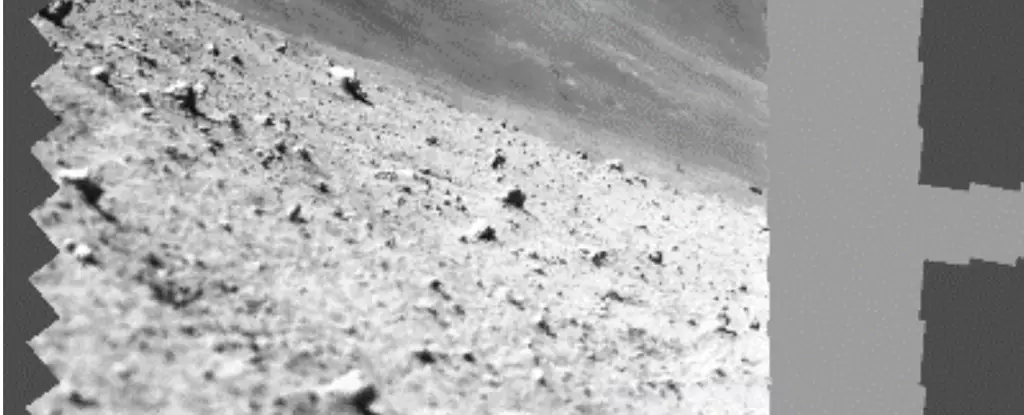Japan’s Moon lander, the Smart Lander for Investigating Moon (SLIM), has recently sent back its first images of the lunar surface, providing a detailed view of the gray, rubble-covered world. However, this beautiful and lonely view is also a poignant reminder of the unfortunate situation that the lander finds itself in. Just moments after capturing these images, the Japan Aerospace Exploration Agency (JAXA) had to power down the lander, leaving it indefinitely upside down.
The images, compiled from 257 monochrome, low-resolution photographs taken by the on board Multi-Band Camera (MBC), showcase the mesmerizing lunar landscape. Unfortunately, the image is incomplete as the camera stopped scanning, leaving us yearning for more of this extraterrestrial beauty. Nonetheless, these initial snapshots provide valuable insight into the lunar surface.
Japan’s successful landing on the Moon marks a significant milestone in the nation’s space exploration endeavors. The country now joins the ranks of the United States, Russia, China, and India as the fifth nation to accomplish this feat. SLIM, fondly nicknamed the ‘Moon Sniper’ due to its precision landing capabilities, exhibited great potential. However, a less-than-ideal landing resulted in the lander landing on its nose, rendering its solar panels ineffective in generating power.
Shortly after landing, JAXA faced the difficult decision of turning off the lander to conserve power. The hope is that in the future, if sunlight can reach SLIM’s solar panels, it will have a chance to restart operations. Despite its shortened operational time, SLIM managed to gather valuable data. The agency has already begun identifying and giving pet-related nicknames to various rocks of interest in the captured images, such as SHIBAINU and Toy Poodle.
While SLIM remains inactive on the slope of the Moon’s Shioli crater, the mission is not completely halted. SLIM’s two payloads, LEV-1 and LEV-2, were successfully deployed and are actively exploring the lunar surface. LEV-2, affectionately referred to as a shape-shifting rover, presents an intriguing collaboration between JAXA and the toy company behind the famous Transformers. This remarkable achievement has left JAXA project manager, Shinichiro Sakai, in awe, stating, “Something we designed traveled all the way to the Moon and took that snapshot. I almost fell down when I saw it.”
This breakthrough in lunar exploration signifies JAXA’s ability to land precisely where intended, opening doors to new possibilities and advancements in space exploration. It marks a significant step forward for Japan’s space program and solidifies their position among the pioneering nations venturing into space.
The future of SLIM remains uncertain, but there is a glimmer of hope for this diligent lander. If sunlight happens to hit SLIM’s solar panels again, the mission will reignite, resuming its scientific duties. Scientists anticipate that SLIM will be able to capture a range of spectroscopic images, helping to identify the chemical composition of the lunar surface. This data holds the potential to unlock secrets about the Moon’s formation and its role in the broader understanding of our universe.
In the meantime, as SLIM awaits its fate, the images it has captured serve as a testament to the ingenuity and determination of the Japanese space program. They showcase Japan’s commitment to exploring the unknown and pushing the boundaries of human knowledge. Whether SLIM manages to restart its operations or remains forever frozen in time on the lunar surface, its contribution to the field of lunar exploration is undeniable.



Leave a Reply